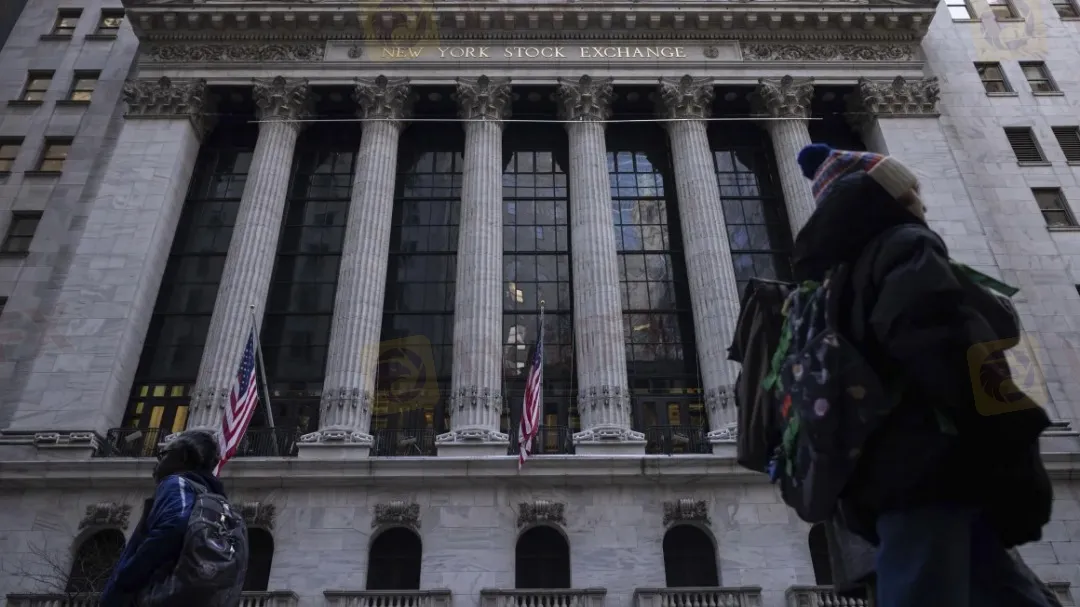简体中文
繁體中文
English
Pусский
日本語
ภาษาไทย
Tiếng Việt
Bahasa Indonesia
Español
हिन्दी
Filippiiniläinen
Français
Deutsch
Português
Türkçe
한국어
العربية
Top 5 things to watch in markets in the week ahead
Abstract:The focus of this week's economic calendar will be the release of U.S. employment data on Friday, as investors hope for signs that the economy is heading for a smooth landing. Following a strong performance for stocks in the first quarter, attention now turns to the beginning of the second quarter. Monitoring of intervention possibilities continues for the yen and the yuan, while market participants keep a close eye on data releases from the Eurozone and China. Here's a rundown of key developments to kickstart your week.

Nonfarm payrolls
The upcoming jobs report on Friday will take center stage as investors anticipate a “soft landing” scenario for the economy, characterized by moderated inflation and avoidance of a severe downturn.

Projections suggest the U.S. economy likely added 205,000 jobs in March, representing a slowdown from the robust 275,000 jobs added in February.
Optimism for a “soft landing” received a boost after the Federal Reserve, in its March meeting, reaffirmed its stance of three potential rate cuts this year while revising its economic growth outlook upward.
In addition to the jobs data, investors will closely follow remarks from several Fed officials scheduled throughout the week. Federal Reserve Chair Jerome Powell is set to speak on Wednesday, alongside appearances from New York Fed President John Williams, San Francisco Fed President Mary Daly, and Richmond Fed President Thomas Barkin, among others.
Q2 kicks off
The U.S. stock market has experienced a robust performance since the beginning of the year, fueled by optimism surrounding artificial intelligence-related stocks and the anticipation of interest rate cuts by the Federal Reserve.

All three major U.S. indexes posted significant gains for the quarter, with the S&P 500 leading the pack with a climb of over 10%, marking its most substantial first-quarter gain since 2019.
The continuation of this rally into the second quarter hinges largely on the actions of the Federal Reserve. Initially, market expectations pointed to six rate cuts from the Fed, but now only three are factored in, with officials yet to indicate that inflation has sufficiently decreased to warrant a rate cut.
Moreover, sustaining strong momentum will also rely on corporate earnings, which are set to kick off in earnest during the second week of April.
Intervention watch
Monetary authorities in Japan and China are closely monitoring their currencies as they weaken beyond levels they've defended for several months, primarily due to the strength of the dollar.

The yen is edging towards the 152 per dollar mark, while the yuan is struggling to surpass the stronger side of 7.2 per dollar. In response, officials in both countries have intensified efforts to support their currencies.
In Japan, this involves issuing verbal warnings, while in China, state banks have been purchasing yuan and selling dollars.
With significant declines observed in both major Asian currencies, there's a growing belief that Beijing may be becoming more accepting of a weaker yuan to preserve its competitive advantage against the yen. However, the future trajectory remains uncertain.
Eurozone inflation

On Wednesday, the Eurozone will unveil its flash inflation data for March, a highly anticipated release amidst speculations of a potential rate cut by the European Central Bank (ECB) in June.
Inflation levels in the euro area have remained elevated since the beginning of the year, necessitating a further decline to pave the way for an ECB rate reduction during the summer. Consequently, the upcoming three inflation reports hold significant importance for both markets and the ECB.
Should inflation exceed expectations, it could delay bets on a rate cut.
In a statement made on Saturday, Robert Holzmann, a member of the ECB Governing Council, suggested the possibility of lowering the key interest rate before the Federal Reserve. He highlighted the comparatively slower growth of the European economy in contrast to its U.S. counterpart.
China data
According to official data released on Sunday, China's manufacturing sector experienced growth for the first time in six months in March. While this offers some relief to policymakers, the ongoing property sector crisis continues to weigh on the economy and overall confidence.
Anticipations are that Monday's Caixin manufacturing PMI will indicate a slight expansion, potentially continuing its divergence from the official reading. This mixed outlook presents a nuanced perspective on the world's second-largest economy.
Policymakers have grappled with sustained economic challenges following the relaxation of COVID restrictions in late 2022. These challenges include a deepening housing crisis, escalating local government debts, and diminishing global demand.

Disclaimer:
The views in this article only represent the author's personal views, and do not constitute investment advice on this platform. This platform does not guarantee the accuracy, completeness and timeliness of the information in the article, and will not be liable for any loss caused by the use of or reliance on the information in the article.
Read more

Top 10 Trading Indicators Every Forex Trader Should Know
Master the top 10 Forex trading indicators to analyze real-time Forex quotes, trends, and market signals. Learn strategies to boost accuracy and avoid mistakes.

Geopolitical Events: What They Are & Their Impact?
You've heard many times that geopolitical events have a significant impact on the Forex market. But do you know what geopolitical events are and how they affect the FX market? Let us learn about it today.

Why Do You Feel Scared During Trade Execution?
Trade execution is a pivotal moment for traders. It is when analysis turns into action, and potential profits or losses become reality. However, for many traders, this moment is accompanied by fear. Why does this happen, and how can you address it?

WikiEXPO Global Expert Interview: Simone Martin—— Exploring Financial Regulation Change
In the midst of financial innovation and regulation, WikiGlobal, the organizer of WikiEXPO, stays abreast of industry trends and conducts a series of insightful and distinctive interviews on pivotal topics. We are delighted to have the privilege of inviting Simone Martin for an in-depth conversation this time.
WikiFX Broker
Latest News
Volkswagen agrees deal to avoid Germany plant closures
Geopolitical Events: What They Are & Their Impact?
Top 10 Trading Indicators Every Forex Trader Should Know
TradingView Launches Liquidity Analysis Tool DEX Screener
MultiBank Group Wins Big at Traders Fair Hong Kong 2024
WikiEXPO Global Expert Interview: Simone Martin—— Exploring Financial Regulation Change
'Young investors make investment decisions impulsively to keep up with current trends' FCA Reveals
Why Do You Feel Scared During Trade Execution?
CySEC Settles Compliance Case with Fxview Operator Charlgate Ltd
Malaysian Influencer Detained in Taiwan Over Alleged Role in Fraud Scheme
Currency Calculator


